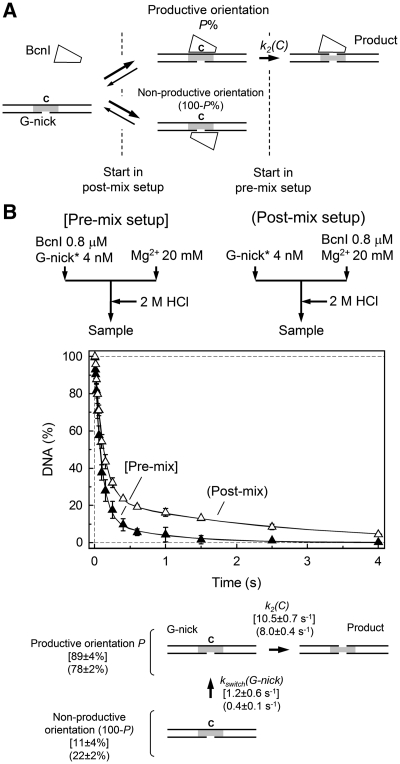Figure 4.
BcnI cleavage of the G-nick intermediate. (A) Scheme for BcnI reaction on the G-nick intermediate. At the initial moment of the reaction, BcnI may bind the nicked DNA in either of two alternative orientations. In the productive orientation, the catalytic center is positioned at the scissile phosphodiester bond in the intact C-strand to proceed with the cleavage [rate constant k2(C)]. In the alternative orientation, the catalytic center of BcnI is placed against the nicked DNA strand G, thus the enzyme has to dissociate and then re-bind in the opposite orientation before cleavage can occur. This rearrangement is described by the rate constant kswitch(G-nick). The fraction of substrate bound in the productive orientation is designated by P(%). (B) Cleavage of the G-nick intermediate in the pre-mix (filled triangles) and post-mix (open triangles) reactions. Flow diagrams schematically depict the two types of experiments performed in a quench-flow device. All data points are presented as mean values from three or more independent experiments ±1 SD. Solid lines represent the fit of the reaction scheme in panel A to experimental data, assuming that the enzyme binding steps are fast and do not affect the observed DNA cleavage rates. Determined rate constants for the pre-mix and post-mix reactions are provided below the graph in square brackets and parentheses, respectively.

